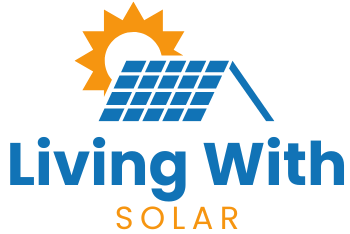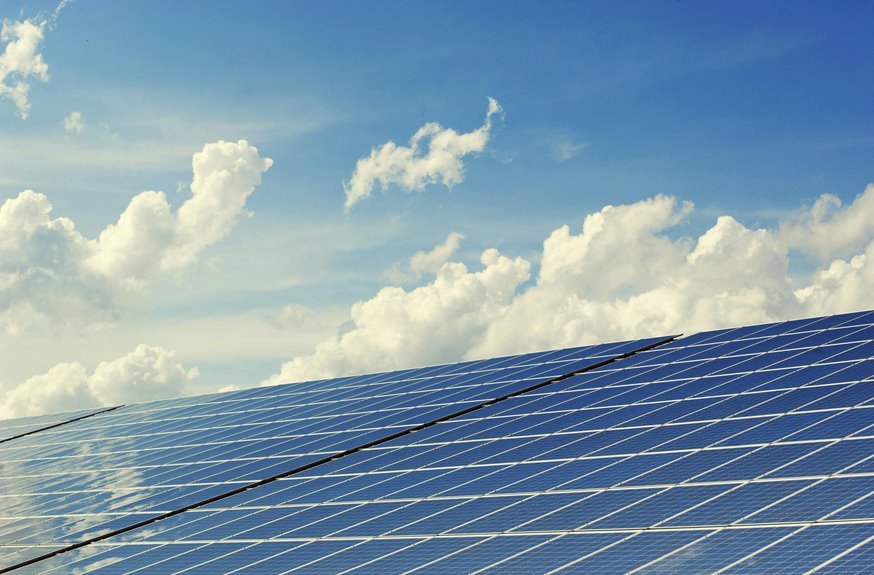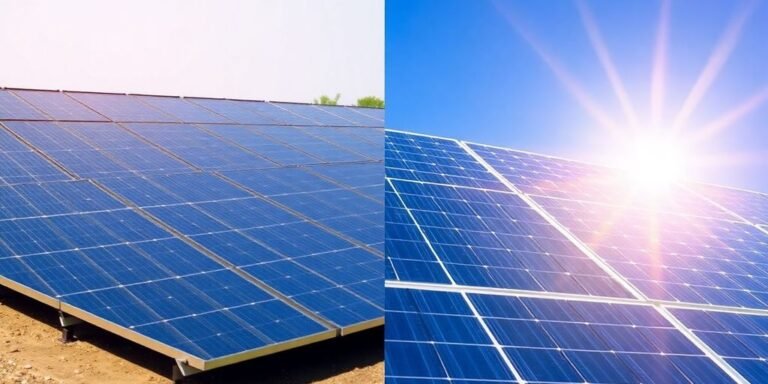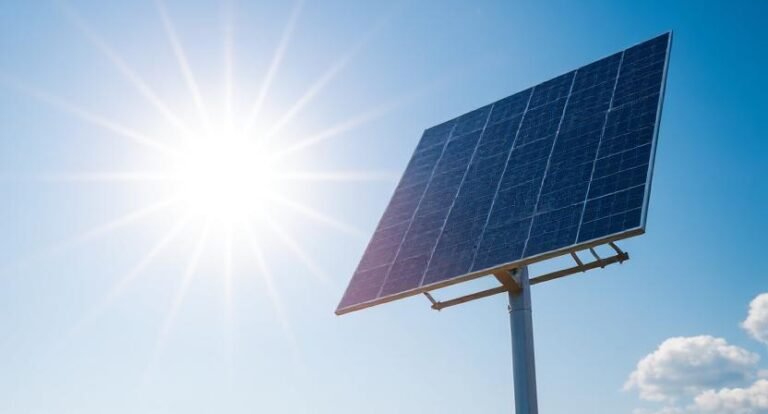When I think about solar energy and solar power, it's clear they aren't the same. Solar energy comes from the sun's fusion process, while solar power specifically refers to converting that sunlight into electricity using photovoltaic cells. Fundamentally, solar energy encompasses all the uses of sunlight, whereas solar power focuses on its electricity generation aspect. There's so much more to uncover about their differences and applications, and I can't wait to share more insights with you.
Key Takeaways
- Solar energy refers to the overall energy produced by the sun, while solar power specifically relates to converting that energy into electricity.
- Solar energy encompasses various applications, including thermal energy, while solar power is limited to electricity generation through photovoltaic cells.
- The mechanism of solar energy involves photons from the sun, while solar power relies on the photovoltaic effect to generate electric current.
- Solar energy contributes to sustainability by reducing carbon emissions, whereas solar power directly impacts energy generation and usage.
- Financial considerations differ; solar energy investments focus on broad environmental benefits, while solar power investments emphasize ROI and electricity savings.
Understanding Solar Energy
Solar energy, the powerhouse of our solar system, is an incredible resource that we can harness to meet our energy needs. This energy comes from the sun's fusion process, releasing vast amounts of photons that reach Earth. By using photovoltaic cells, we can convert sunlight into usable electricity, showcasing the efficiency of solar power technology. The potential for sustainable energy is immense; just 90 minutes of sunlight could theoretically power our entire civilization for a year! Beyond electricity generation, solar energy also includes thermal energy applications, demonstrating its versatility. Whether through solar thermal systems or passive solar designs, harnessing sunlight offers a promising path toward a cleaner, more sustainable future. The possibilities are endless, and it's exciting to explore them!
Defining Solar Power
While many people often confuse solar energy with solar power, they actually refer to different aspects of harnessing sunlight. Solar power specifically involves converting sunlight into electricity, primarily using photovoltaic (PV) cells found in solar panels. When I think about solar power, I consider how it generates renewable energy that can greatly reduce our reliance on fossil fuels. The amount of solar power produced is measured in watts or kilowatts, showing the rate of electricity generated at any moment. Components like inverters and solar panels work together to manage energy flow effectively. Factors such as panel orientation and sunlight exposure can influence the efficiency of solar power generation, making it a dynamic and impactful energy solution.
The Mechanism of Solar Energy
Understanding how solar energy works is fascinating, especially when you consider its origins in the Sun's core. The Sun generates enormous energy through hydrogen fusion, producing photons that travel to Earth. When these photons hit solar cells, they trigger the photovoltaic effect, freeing electrons and creating electric charges.
Here's a quick overview of the processes involved:
| Process | Description | Outcome |
|---|---|---|
| Photon Interaction | Sunlight strikes solar cells | Electric charges |
| Direct Current (DC) | Generated by solar cells | Needs conversion |
| Alternating Current (AC) | Inverters convert DC for home use | Usable solar power |
The effectiveness of this conversion hinges on the solar cells and inverter quality, ultimately transforming sunlight into electricity efficiently.
How Solar Power Is Generated
Harnessing the power of sunlight involves a fascinating process known as the photovoltaic effect. When photons from sunlight strike the semiconductor materials in solar cells, they free electrons, generating an electric current. This electric current is produced in the form of direct current (DC), which needs to be converted to alternating current (AC) for practical use in homes and businesses. A typical solar panel system consists of multiple solar cells, often ranging from 36 to 144 cells per panel, depending on the design and energy requirements. The efficiency of solar power generation can be influenced by factors like inverter type, panel orientation, and sunlight intensity. Ultimately, solar power provides a sustainable solution for meeting our energy needs.
Key Technologies in Solar Energy
Solar power generation relies heavily on advanced technologies that enhance efficiency and broaden applications. One of the key technologies in solar energy is photovoltaic systems, which consist of solar cells made from silicon. These cells convert sunlight directly into electricity through the photovoltaic effect. Another significant technology is solar thermal, where solar collectors capture sunlight to heat water or space. Additionally, concentrating solar power (CSP) systems use mirrors or lenses to focus sunlight onto a small area, generating heat to produce electricity via a steam turbine. Innovations in solar technologies, like thin-film solar cells and nanotechnology, are improving efficiency and reducing costs, making solar energy more accessible. It's exciting to see how these advancements are shaping the future of solar power!
Key Technologies in Solar Power
When I think about solar power, I can't help but appreciate the key technologies that make it possible. Photovoltaic systems are at the forefront, but I'm also intrigued by concentrating solar technologies and emerging innovations that push the boundaries of efficiency. Let's explore how these advancements are shaping the future of solar energy.
Photovoltaic Systems Overview
While exploring renewable energy options, you'll find that photovoltaic (PV) systems stand out for their ability to convert sunlight directly into electricity. These systems utilize solar cells, primarily made of silicon, which generate electric current through the photovoltaic effect. Typically, a PV panel consists of 36 to 144 solar cells that work together to produce direct current (DC) electricity from sunlight. To make this energy usable in our homes and businesses, inverters play an essential role by converting DC into alternating current (AC). The efficiency of a PV system can vary based on factors like inverter type, panel orientation, and sunlight exposure. Thanks to modern advancements, innovations like thin-film materials and nanotechnology are improving the performance of solar energy systems.
Concentrating Solar Technologies
In addition to photovoltaic systems, there's another fascinating approach to harnessing the sun's energy: Concentrating Solar Power (CSP) technologies. CSP systems use mirrors or lenses to focus sunlight onto a small area, generating heat that's converted into electricity, typically through a steam turbine. Common CSP technologies include parabolic troughs, solar power towers, and dish/engine systems, each uniquely designed for solar energy capture. One of the significant advantages of CSP is its ability to provide utility-scale power generation, especially when paired with thermal energy storage, allowing for electricity production even without sunlight. With efficiency rates exceeding 20% under ideal conditions, CSP systems are a competitive option for large-scale renewable energy applications, showcasing their importance in today's energy landscape.
Emerging Solar Innovations
As the demand for cleaner energy grows, I'm excited to explore emerging solar innovations that are reshaping the solar power landscape. Bifacial solar panels are leading the way, capturing sunlight on both sides and boosting energy generation by 10-20%. Meanwhile, perovskite solar cells are revolutionizing efficiency, with lab results showing over 25% efficiency while being cheaper to produce. Solar tracking systems enhance production even further, adjusting panels to follow the sun and increasing output by up to 30%. Additionally, energy storage solutions, like lithium-ion batteries, allow us to store excess solar energy for later use. Innovations like transparent solar panels could turn windows and facades into energy-generating surfaces, expanding the potential of solar power in our daily lives.
Implications for Sustainability
The implications for sustainability are profound when we consider the change towards solar energy. As a renewable resource, solar energy offers a sustainable alternative to fossil fuels, greatly reducing carbon emissions. This transformation enhances energy security, as we become less reliant on traditional energy sources and benefit from price stability. I've noticed that communities adopting solar power are not only fostering economic growth but also increasing resilience against energy shortages. The minimal environmental impact of solar energy systems promotes cleaner air and water while supporting biodiversity. Plus, the long-term cost savings on electricity bills allow households and businesses to invest in more sustainable practices. Embracing solar energy is an essential step towards a more sustainable future.
Evaluating Solar Solutions for Your Home
Shifting towards solar energy not only benefits the planet but also offers homeowners a chance to take control of their energy needs. When evaluating solar solutions for my home, I first looked at my average monthly electricity usage in kilowatt-hours (kWh) to determine the right system size. I also considered the average sunlight hours in my area, as they greatly impact the efficiency and energy output of the solar panels I choose to install. To guarantee I accounted for potential inefficiencies, I factored in a 1.3 multiplier. Consulting with professional installers helped me navigate available grants and loans, making the initial solar installation more affordable. Understanding inverter types also maximized my system's efficiency and overall performance.
Frequently Asked Questions
What Is the Difference Between Solar Energy and Solar Power?
When I think about solar energy and power, I see them as intertwined yet distinct. Solar energy encompasses all sunlight-derived forms, while solar power specifically refers to the electricity generated from that energy. It's fascinating!
What's the Difference Between Energy and Power?
Isn't it fascinating how energy and power dance together? I've learned that energy's the total work done, while power measures how fast that work happens. Understanding this helps me appreciate how my devices consume energy daily.
What Does Solar Power Mean?
When I think about solar power, I see it as harnessing sunlight to generate electricity. It's amazing how sunlight can be converted into usable energy, making our world more sustainable and reducing reliance on fossil fuels.
Why Is My Electric Bill so High When I Have Solar Panels?
I've found that even with solar panels, bills can stay high. If my system's too small, if there's not enough sun, or if I use too much energy, I still end up paying more.





